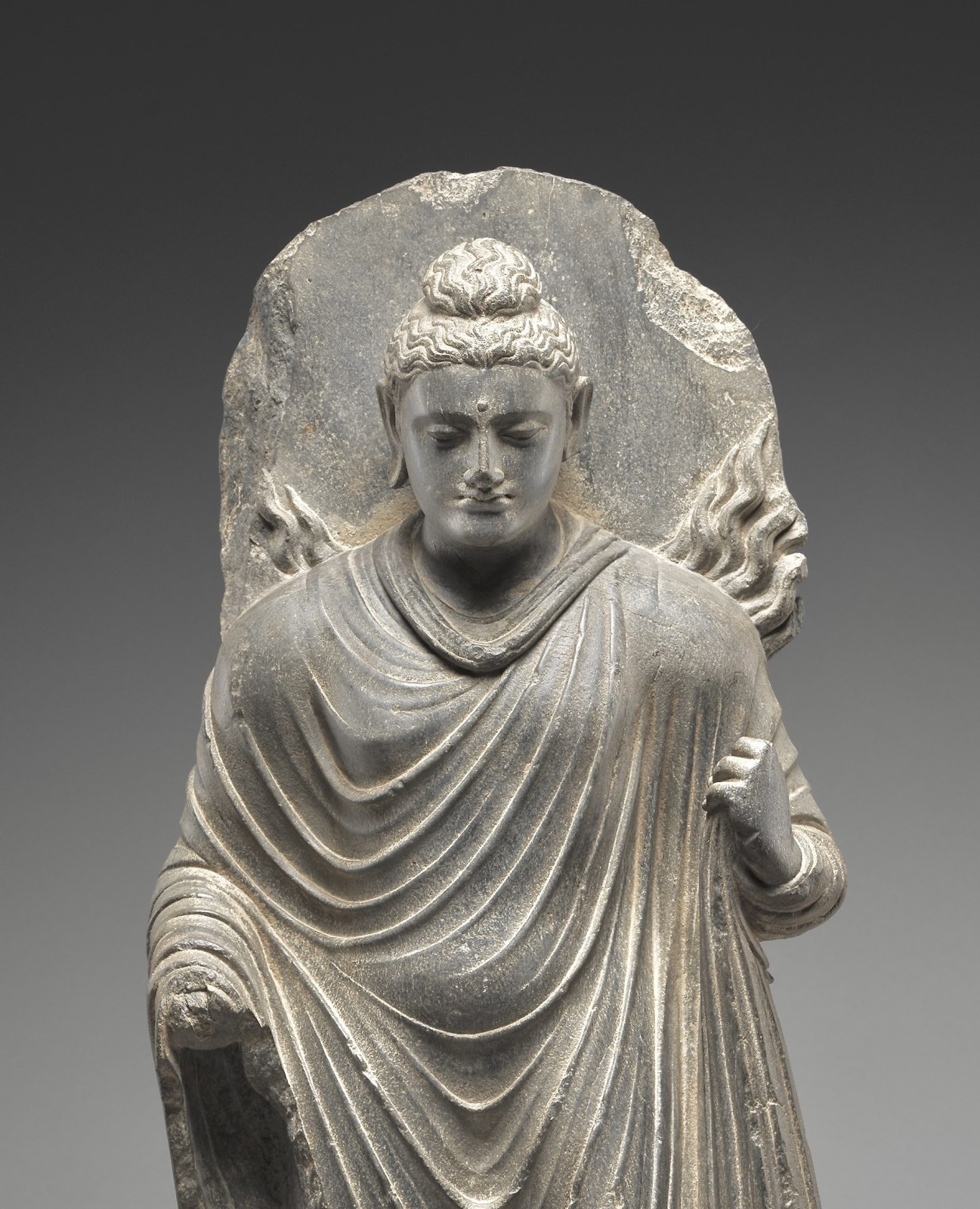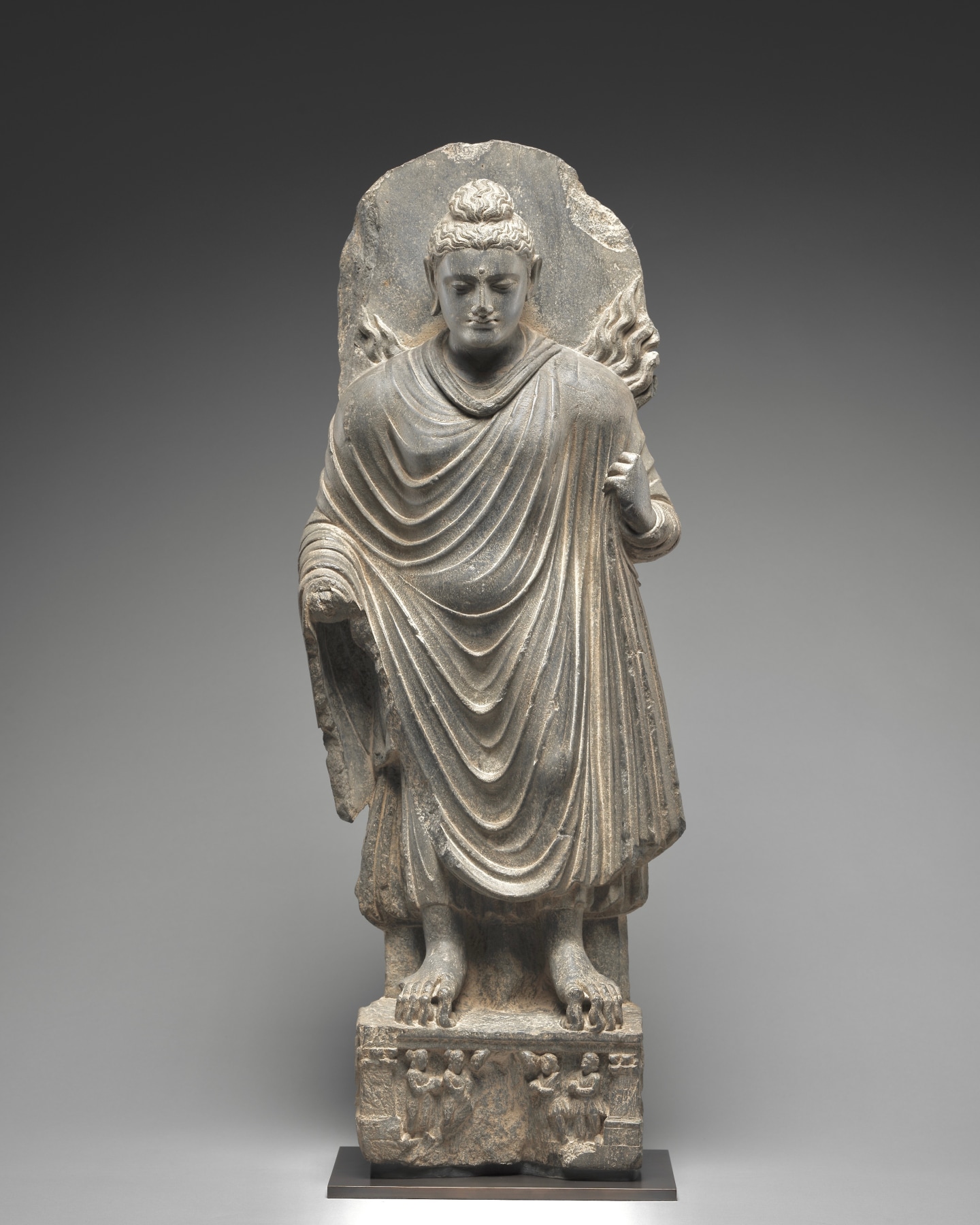
Provenance:
European Private Collection, acquired in the early 1980s
The Buddha is standing in a subtle tribhanga pose atop a rectangular pedestal with an inset panel depicting devotees. He is wearing a monastic robe (sanghati) falling in elegant, sweeping folds across the body. His left hand is raised and grasping the hem of the garment, the right hand fragmentary. A fragmentary halo encircles the head. Flames are leaping from each shoulder and depicted in relief against the halo, and water flows from the feet of Buddha lifting him above the pedestal.
After the Buddha reached enlightenment, he spent the remainder of his life traveling around northeastern India, giving teachings and performing miracles to convert followers and establish the Buddhist community. The Buddha's Twin Miracle, or Yamakapratiharya, was a supernatural display performed at the city of Śrāvastī, where the Buddha levitated and simultaneously emitted fire and water from his body, alternating them to create a dazzling display that illuminated the cosmos. This powerful miracle demonstrated his spiritual supremacy over rival heretics, solidified his divine authority, and served to inspire faith and awe among his followers. It is considered the foremost of the Buddha's miracles, as it is believed to be a power uniquely shared only by fully enlightened Buddhas.
Two other sculptures depicting this iconography are in the Museum fur Asiatische Kunst, Berlin, and in the Musee Guimet, Paris (inv#17478); see also the small relief panel in the Cleveland Museum of Art (Czuma, Stanislaw, Kushan Sculpture: Images from Early India, The Cleveland Museum of Art exhibition catalogue, 1985, cat. no. 104, p. 192).

